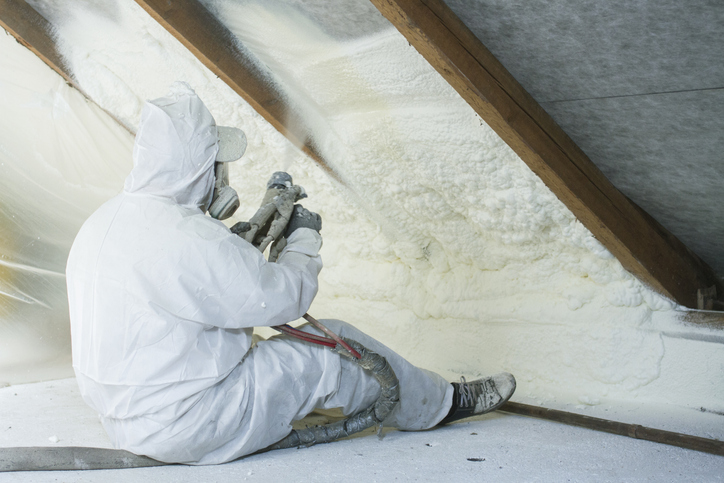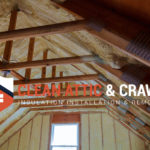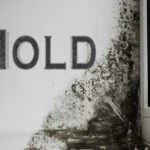The Spray Foam Attic Insulation Newbie Guide
Do you own a home? Are you concerned about energy costs? Many homeowners just like you are searching for ways to reduce their energy costs. This explains why they are seeking to adopt advanced and more effective attic insulation to cut down costs. If you’re one of them, you may need this ultimate guide to spray foam attic insulation.
Understanding the Spray Foam Attic Insulation Method
The number of attic insulation methods today will have you confused when it comes to choosing the best that meets your needs. Spray foam attic insulation could be all you need, seeing that it provides an ideal option which is appropriate for nearly all homes. If you want to know how effective spray foam insulation is, you may need to know that according to studies, numerous spray foam attic insulations have been installed across the US.
The good thing is that as a homeowner, you don’t need to struggle to establish whether a specific spray foam insulation is compatible with your house. As your professional spray foam insulation installation company, we have a guide to ease the decision process.

Types of Spray Foam Attic Insulation
You can choose one of the two spray foam attic insulation types which your service provider will either apply in horizontal or vertical spaces. They are:
Open-Cell Attic Spray Foam Attic Insulation
Your service provider will probably not recommend the open cell attic spray foam attic insulation seeing that it’s the least used types in residential areas. These types aren’t dense compared to the closed-cell types and come with low heat flow resistance.
What’s more, open-cell spray foam attic insulation comes with an application similar to the closed cell option, only that the former will expand when applied and that makes them ideal for difficult to reach spaces, nooks, and cavities.
If you have to choose this type, you’ll want to note that it’s not sufficiently dense and therefore can’t be said to be waterproof. While this insulation type may work in some of your areas, use it sparingly within your home to avoid expensive replacement and repair jobs.
Closed-Cell Attic Spray Foam Insulation
Chances are: your service provider will opt for the closed cell spray foam attic insulation seeing that it’s fast becoming a popular insulation type among many homes. The advantage of using this insulation type is that it’s heavier and denser compared to the open cell type. What’s more, it has a higher resistance value, is durable, and more effective.
All these factors combined make this insulation type slightly expensive than the open cell option. Apart from being efficient in terms of insulating, closed-cell spray foam attic insulation is water resistance. You can, therefore, be guaranteed that water exposure won’t damage it. Because it’s dense enough, applying it to attic walls is a great way of reinforcing the structural design of your home.
Is Spray Foam Insulation Good for Attics?
You can’t know whether or not spray foam insulation is good for attics if you don’t know what it is. Spray foam insulation is defined as an air barricade which generates a seal against air circulation. Open cell spray foam attic insulation can enlarge up to a hundred times its actual size to seal every cranny and nook in the cavity.
You may want to know the spray foam insulation ingredients which are organic and water-blown chemical compounds obtained from petroleum extracts. Below are spray foam attic insulation pros and cons.
Pros:
- Spray foam attic insulation is eco-friendly
- It doesn’t retain water and therefore you can be assured that there will be no mildew or mold growth in the event of a roof leak
- It’s rated class one fire both for the attic and other open cavities across the home
- Spray foam attic insulation blocks rodents from accessing the attic
Cons:
- Spray foam attic insulation is costly compared to ordinary attic insulation methods. Still, you may find it valuable in the long term
- You may have to hire a professional spray foam insulation company to complete the task.
- Some open cell spray brands may come with an odor. You may want to be careful when choosing your preferred spray foam insulation brand.
- This is because the installation process is too complex which denies DIY enthusiasts the opportunity to install it on their own.
How Safe is Spray Foam Attic Insulation?
Spray foam attic insulation is not only a safe product, but it’s also effective and popular and develops a foolproof enclosure in the exposed areas within your home. Have you been struggling with a moldy attic or drafty basement?
Perhaps it’s because of poor insulation. Spray foam is unique and adopting it guarantees you that all corners in your house are well insulated. This reduces any chances of small gaps or cracks which can make your home moist or even drafty.
If you are working on a budget, then you may want to consider other cheaper forms of insulation available in the market. It’s however worth noting that even though your alternative methods may seem cheaper initially, they can set you back financially especially in the long term. To avoid inconveniences in the near future, you may want to analyze the long term benefits of spray foam attic insulation regardless of the initial costs.
Currently, spray foam insulation is among the most effective methods you can adopt when you’re looking at reducing your energy costs. You may just join the list of other homeowners who are enjoying a tremendous drop in their electricity bills. One of the main advantages of spray foam attic insulation is that it’s eco-friendly.
Studies suggest that more homes in recent years are either built or renovated using spray insulation that was witnessed before. In 2013 for instance, approximately 400,000 homes in Canada were fitted with spray foam attic insulation.
How Much Does it Cost to Insulate an Attic Foam?
It’ll cost between $1,700 and $2,100. You can roughly translate this to be $1.50 and $3.50 per square foot. But you need to understand that the cost will, of course, depend on your insulation material of choice. Spray foam attic insulation is the most expensive but it’s the best option for new buildings and for homeowners who want to reduce noise in the home.
If you opt for spray foam insulation, you’ll need to part with approximately $70 per hour, and in some cases, you may even require a qualified and skilled electrician to insulate cables and junction boxes safely. For the latter, you could even part with an extra $85 per hour. Further, the total cost depends on the size of your attic, how difficult the task is, and your insulation type of choice.
Finally
From the information herein, you can evidently see that the advantages of the spray foam attic insulation option far outweigh the initial cost of installation. Adopt it and enjoy long term savings.


